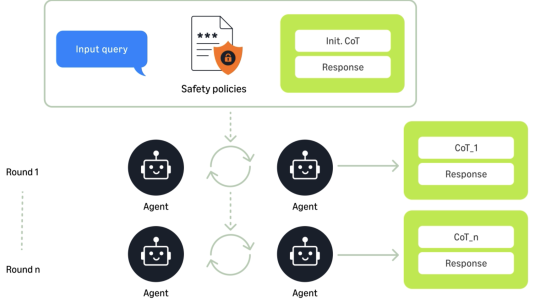Customer-obsessed science


Research areas
-
July 31, 2025Using ensembles of agents to generate and refine interactions annotated with chains of thought improves performance on a battery of benchmarks by an average of 29%.
Featured news
-
2024Large Language Models (LLMs) trained on large volumes of data excel at various natural language tasks, but they cannot handle tasks requiring knowledge that has not been trained on previously. One solution is to use a retriever that fetches relevant information to expand LLM’s knowledge scope. However, existing textual-oriented retrieval-based LLMs are not ideal on structured table data due to diversified
-
2024Query performance (e.g., execution time) prediction is a critical component of modern DBMSes. As a pioneering cloud data warehouse, Amazon Redshift relies on an accurate execution time prediction for many downstream tasks, ranging from high-level optimizations, such as automatically creating materialized views, to low-level tasks on the critical path of query execution, such as admission, scheduling, and
-
Entity disambiguation is one of the most important natural language tasks to identify entities behind ambiguous surface mentions within a knowledge base. Although many recent studies apply deep learning to achieve decent results, they need exhausting pretraining and mediocre recall in the retrieval stage. In this paper, we propose a novel framework, eXtreme Multi-label Ranking for Entity Disambiguation
-
ASPLOS 20242024Recent years have seen an increase in the development of large deep learning (DL) models, which makes training efficiency crucial. Common practice is struggling with the trade-o between usability and performance. On one hand, DL frameworks such as PyTorch use dynamic graphs to facilitate model developers at a price of sub-optimal model training performance. On the other hand, practitioners propose various
-
NSDI 2024: 21st USENIX Symposium on Networked Systems Design and Implementation2024Multimodal model training takes multiple types of inputs to process with differently structured submodules, and aggregates outcomes from the submodules to learn the relationship among various types of inputs, e.g., correlating text to image for text-to-image generation. The differences of submodule architectures as well as their inputs lead to heterogeneity in terms of computation efficiency. Failing to
Academia
View allWhether you're a faculty member or student, there are number of ways you can engage with Amazon.
View all





























